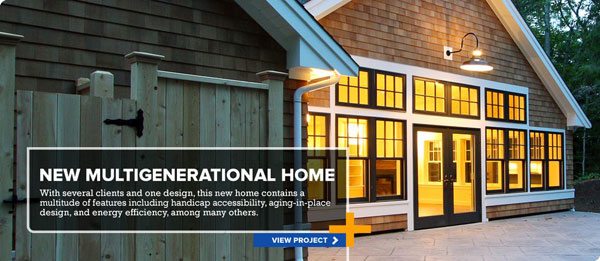
February 17, 2018; New York Times
The slow growth of multigenerational American households over the last ten years is a change worth examining. “Last year,” as Paula Span in the New York Times reports, “14 percent of adults in a shared household were parents of the household head, double the proportion in 1995.” By 2014, nearly one in five households were multigenerational.
As we return to a time when more people live with their parents and their children, social policymakers and health and social service organizations will need to adjust—and this, of course, includes nonprofits.
Ever since the end of the Great Depression, leaving home has been a rite of passage for children, and for many adults, remaining independent in older years has been a goal fueled by increasing financial security. Social scientists Kathleen McGarry and Robert Schoeni pointed this out in a monograph published in 2000.
The percentage of elderly widows living alone rose from 18 percent in 1940 to 62 percent in 1990, while the percentage living with adult children declined from 59 percent to 20 percent…income growth, particularly increased Social Security benefits, was the single most important determinant of living arrangements, accounting for nearly one-half of the increase in independent living…we find no evidence that the effect of income became stronger over the period. Changes in age, race, immigrant status, schooling, and completed fertility explain a relatively small share of the changes in living arrangements.
Housing, transportation, healthcare, and other educational and social service systems were adapted to respond meet the needs of independently living adults across the age spectrum. Span notes that this picture began change about a decade ago: “A Census Bureau Report noted that the number of shared households had jumped more than 11 percent between 2007 and 2010. The spike came primarily from younger people—buffeted by unemployment, foreclosures and student debt—moving in with their parents.”
Sign up for our free newsletters
Subscribe to NPQ's newsletters to have our top stories delivered directly to your inbox.
By signing up, you agree to our privacy policy and terms of use, and to receive messages from NPQ and our partners.
By 2014, Span notes, almost one in five Americans were living in a multigenerational household. Economics and an aging population are two factors, but they are not the only ones. An increasingly multicultural society, reflecting the impact of the diverse cultures becoming part of our communities, also contributes to this change. Dr. Richard Fry, A Pew Center researcher, told the Times that “the country’s changing demographics encourage shared living…It’s much more prevalent among nonwhite adults, and they’re a growing share of the adult population.” About a quarter of Latinx shared a household last year, as did 40 percent of blacks and 42 percent of Asian Americans—who have higher median household income than the national average.
Are we ready to adapt? Housing planners already see friction between a system designed to accommodate the drive for long-term independent living with the needs of multigenerational households. Lenard W. Kaye, DSW, PhD, director of the Maine Center on Aging and a professor in the University of Maine School of Social Work, told Social Work Today:
During the course of giving it their all to someone they love so deeply, family members often forego their own needs, such as keeping doctors’ appointments and maintaining a social life. These families quickly discover that the infrastructure isn’t prepared for them to take on that role. Insurance companies, educational systems, and housing options are not always accommodating, so oftentimes families find themselves unprepared to take on a considerable financial, physical, and emotional strain.
And Curbed.com noted in 2017 the barriers presented by permitting and zoning to create and add living space to existing homes. Michael Litchfield, the author of In-Laws, Outlaws, and Granny Flats: Your Guide to Turning One House into Two Homes, speaks of the “dead hand of single-family zoning” that prevents “more informal, reactive responses to overcrowded family homes.”
There is much that is good in a return to multigenerational living. The challenge is whether we can recognize that it calls upon government and service organizations to acknowledge its differences and change how they do business.—Martin Levine











